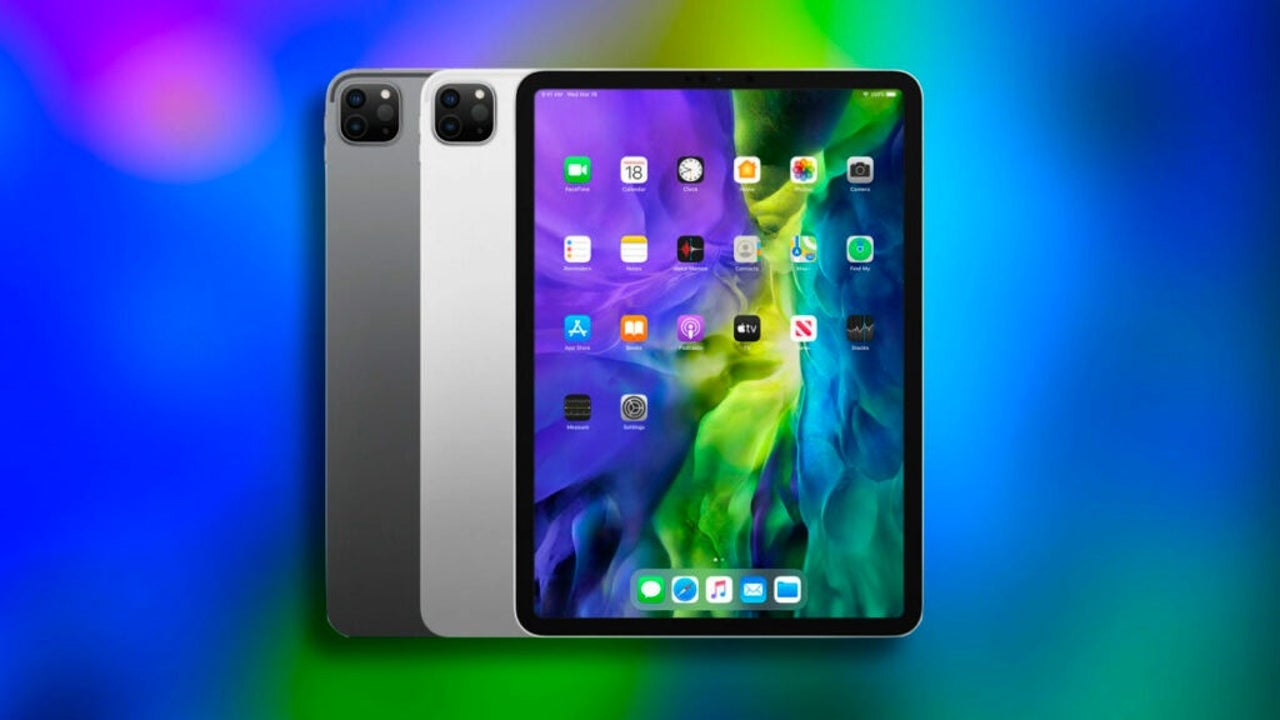News
Apple’s Bold Move: iPads to Embrace OLED Display Technology
A strategy that we do not fully understand, but that may make a lot of sense.

- July 15, 2023
- Updated: July 2, 2025 at 1:41 AM

For years, we have been surrounded by contradictory rumors about the advancement of display technology in Apple devices. Now, with new information at hand, it appears that the company is gearing up to bring OLED to the iPad, while the arrival of OLED to the MacBook Pro is delayed until 2027 at the earliest. But where does mini-LED fit into all of this? Let’s sort through the rumors and clarify some concepts.
What is LED, OLED or mini-LED?
LCD, or Liquid Crystal Display, is a display technology that uses a backlight to evenly illuminate all the pixels on the screen. The pixels in an LCD are composed of liquid crystal molecules that align in different ways to allow light to pass through them, thus creating colors and images. While LCDs are capable of producing vibrant and clear colors, their main drawback is the lack of true blacks, as there is always some backlight present, which can result in slightly washed-out images and a clear lack of contrast.
On the other hand, OLED (Organic Light Emitting Diode) displays work in a completely different way. Instead of having a backlight source, each pixel in an OLED display produces its own light. This means that when a pixel is turned off, it is completely black, allowing OLED displays to achieve true blacks and infinite contrast. Additionally, because there is no need for a backlight, OLED displays can be thinner and more flexible, enabling more innovative device designs. Their main disadvantage is that, being organic LEDs, over time and when projecting similar content on the screen, ghosting or image retention can occur.
Mini-LED technology, on the other hand, is a sort of middle ground between LCD and OLED. Mini-LED displays use thousands of tiny LED lights for backlighting, rather than a single backlight panel like in traditional LCD displays. This allows for much more precise control of screen illumination, which can result in deeper blacks and better contrast than LCDs, although not as much as OLED. However, mini-LED displays tend to be cheaper to manufacture than OLED displays, making them an attractive option for manufacturers seeking a balance between cost and performance.
LED, mini-LED or both?
This is where the recent report from Omdia (via 9to5mac) comes into play, explaining that Apple is on track to update the iPad Pro with OLED technology next year, for both the 11-inch and 12.9-inch models. Currently, it’s worth noting that only the 12.9-inch iPad Pro model utilizes mini-LED technology, while the 11-inch iPad Pro uses an LED display. If this rumor turns out to be true, we would see a consolidation around OLED technology for the iPad Pro next year.
Apple’s intentions to implement OLED in its iPads have also been supported by reports from Bloomberg and analyst Ross Young, who have corroborated similar information, although not always for the “Pro” iPads. Several months ago, especially with the arrival of mini-LED to the 12.9-inch iPad Pro and the 14-inch and 16-inch MacBook Pro, the idea was raised that Apple would reserve OLED for entry-level iPads and keep mini-LED for the higher-end ranges.
However, it now seems that plans are evolving. In fact, Bloomberg recently reported that Apple is planning a “major iPad Pro overhaul,” which would include a redesigned form factor and the aforementioned OLED displays by spring 2024. Meanwhile, the situation for the MacBook is less clear. This week’s report states that the MacBook Pro with OLED display was originally scheduled for 2026. However, it seems that Apple recently decided to delay this transition until 2027 at the earliest.
In the meantime, we have MacBooks using LCD displays and those using mini-LED technology. The 13-inch and 15-inch MacBook Air models—long-awaited by Apple—along with the 13-inch MacBook Pro, utilize LCD displays, while the 14-inch and 16-inch versions of the MacBook Pro feature mini-LED displays. Additionally, other sources claim that Apple will release a MacBook Air with an OLED display as early as 2024. This information is backed by analysts such as Ross Young and Ming-Chi Kuo.
This is where we enter the realm of speculation, but it is possible that Apple could adopt a dual-screen strategy, combining both mini-LED and OLED displays. This is already hinted at with the initial releases of these display technologies, and it would reconcile the contradictory reports, suggesting a timing in which the two technologies would be divided between Pro models and entry-level models.
Therefore, we could see the introduction of mini-LED in the 11-inch iPad Pro, while the MacBook Air may transition to OLED, and the education-focused iPad could retain the LCD display. In the MacBook lineup, we could see an OLED display for the 13-inch or 15-inch MacBook Air, and a mini-LED display for the 14-inch and 16-inch MacBook Pro.
Indeed, we are drawing conclusions based on rumors, so there is still plenty of room for Apple to make other decisions. In any case, it is clear that the next few years will be interesting in terms of the evolution of display technology. We will see how events unfold.
Some of the links added in the article are part of affiliate campaigns and may represent benefits for Softonic.
Architect | Founder of hanaringo.com | Apple Technologies Trainer | Writer at Softonic and iDoo_tech, formerly at Applesfera
Latest from David Bernal Raspall
You may also like
 News
NewsThis free streaming service is standing up to the biggest players: how does it do it?
Read more
 News
NewsArtificial intelligence is transforming advertising: for better?
Read more
 News
NewsCan Blizzard make a comeback in 2026?
Read more
 News
NewsThe best game of 2025 has been disqualified from the Indie Game Awards because of AI
Read more
 News
NewsThis way you can make your internet browsing more sustainable: for a more eco-friendly 2026
Read more
 News
NewsThey have just released one of the best movies of 2025 on SkyShotime: perfect for Christmas
Read more